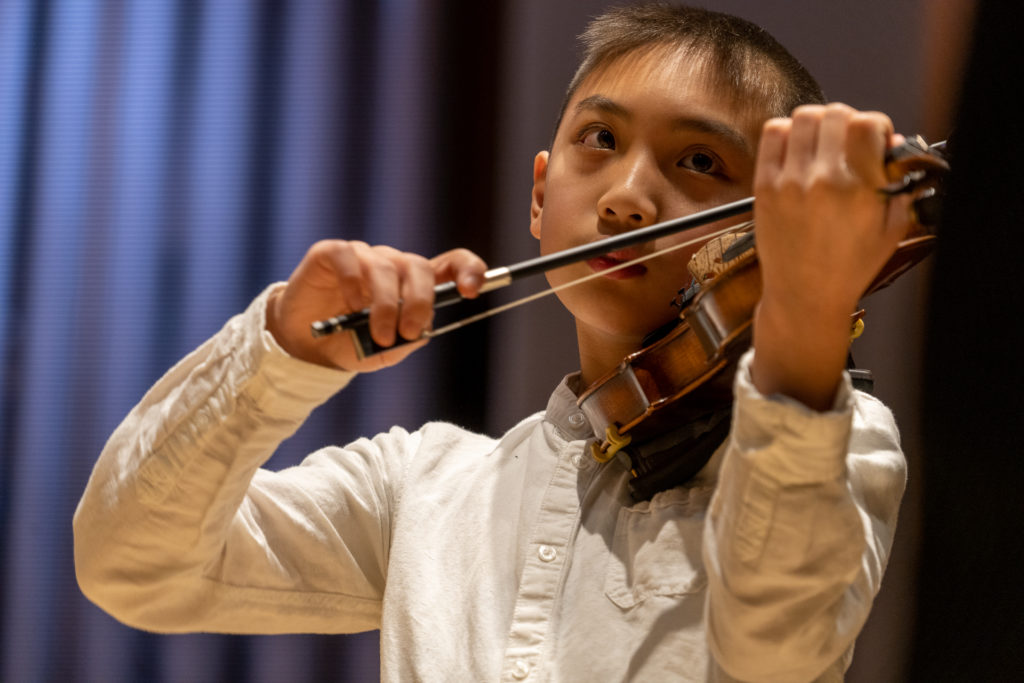
I returned from a workshop this weekend full of ideas about the bow hand. I see so many students plagued by tension and unable to rest the bow hairs on the string. These are the first things I do to target a locked up bow hand.
Three Important Concepts
- Strength you can release is POWER
Strength you can’t release is TENSION - Very rarely does the bow hand hold up the bow. The string holds up the bow.
- Bow arm train analogy. The upper arm is the engine of the bow. The forearm is the energy. The palm is a vacant cargo car. The fingers are passengers sleeping in the passenger car. Of course the entire train moves, but only the engine leads. Everything else must follow. (Many students think the passengers drive the train).
Three Important Restorative Exercises
- Chopstick and butterflies.
Make a bow hand on practice chopsticks or bread tongs (attached on one side). Have the students use strength to click the chopsticks together, but then soften to let the chopsticks go back to resting state. Use muscle then release muscle. When they build a bow hand with the bow resting on the shoulder their thumb muscles should be completely released (because the shoulder is supporting the bow). When the bow stick floats (what I call a butterfly lift and land) the thumb and pinkie must engage. But, and this is a big but!, as soon as the bow rests on the shoulder again it returns to its softened, resting state. - Coin on the hand (palm is balanced and soft, wrist are free). This is a terrific experiential exercise I picked up from Ed Sprunger. The top of the palm should be flat and balanced (no matter where you are in the bow). Balance the hand (what I call the table) and put a quarter on there. Take the quarter anywhere you want– circles around the face, high and low, in and out, along the bow path– and that quarter shouldn’t fall. In order for the palm to stay balanced while moving the wrist needs to be able to flex. Often students are straining their palms and locking their wrist. You can use the counter example of locking the wrist on purpose to see how hard it makes the exercise. Another nice extension is to ask for students to do the game with the chopstick in their hand so they feel the feeling of touching the bow without squeezing (so the wrist doesn’t lock).
- Bow tram.
This is an idea I got from Kerstin Wartberg. Construct a bow tram– a string with a tube on it– and let the student rest their bow arm on the tube while they travel up and down. The string should sit right above their violin shoulder on the bowing path. This is a great teacher because the thumb shouldn’t need to squeeze in order to travel up and down. Just balanced arm weight should do the trick. You can also discuss the three dimensionality of the string. It is also impossible to not travel on the bow path, so all of the concentric circles in the joints are informed by this straight line. Lastly, you may practice the impetus of motion coming from the upper arm engine rather than the passenger fingers.

Leave a Reply